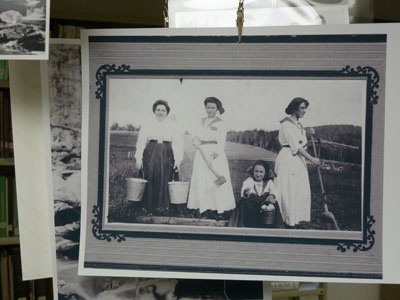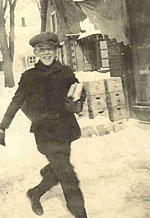 The Russell Vermontiana Collection includes rare books, works by Vermont authors, historic documents, photographs and genealogies focused on Arlington and the neighboring towns of Sunderland and Sandgate (SAS). Dr. George A. Russell, a former resident of Arlington, started collecting at the age of 12 and continued until his death in 1968 at the age of 89. Today this magnificent collection is housed at the Martha Canfield Library in Arlington, but it can only be viewed on Tuesdays or by appointment.
The Russell Vermontiana Collection includes rare books, works by Vermont authors, historic documents, photographs and genealogies focused on Arlington and the neighboring towns of Sunderland and Sandgate (SAS). Dr. George A. Russell, a former resident of Arlington, started collecting at the age of 12 and continued until his death in 1968 at the age of 89. Today this magnificent collection is housed at the Martha Canfield Library in Arlington, but it can only be viewed on Tuesdays or by appointment.
 With help from e-Vermont, Russell Collection Curator Bill Budde and a group of local volunteers are striving to find new ways to share their communities’ rich history online and make it available to anyone interested 24/7. The SAS e-Vermont digital history project supports the digitization of the collection and new ways of accessing and displaying these historically significant materials.
With help from e-Vermont, Russell Collection Curator Bill Budde and a group of local volunteers are striving to find new ways to share their communities’ rich history online and make it available to anyone interested 24/7. The SAS e-Vermont digital history project supports the digitization of the collection and new ways of accessing and displaying these historically significant materials.
For example, photographs donated to the Russell Collection are scanned, edited, stored and digitally annotated (identifying an image’s source, creator, date and time, subjects and place). E-Vermont provided Martha Canfield Library the tools needed to accomplish this workflow – an Epson flatbed scanner for photos, an Elmo document camera for books and delicate papers, a Gateway desktop computer, and Photoshop Elements image editing software.
According to Budde, the creation of this digital library of photos has two immediate and important benefits to the SAS communities: “First, the digital collection preserves the visual history of our towns in an efficient and cost effective manner. Second, it is easier to make several backup copies to store in several physically separate locations to ensure copies survive disasters like fire and storm. Copies also become available to a larger portion of the local residents – students, history researchers, family historians, and architectural historians–at far less expense and without causing damage to fragile originals.”
New ways of accessing the Russell Collection photographs include DVDs custom loaded with the types of photos being requested (by town, by industry/business, by people and events, etc.); specific image file requests sent electronically via email; printed holiday cards created from scanned photos and sold to library patrons; and eventually, digital photos highlighted on the Martha Canfield Library website and made available through UVM’s Bailey Howe Library Center for Digital Initiatives.
SAS’ digital history project, advice received from other libraries and historical societies that have digitized their collections, and the professional experience and suggestions provided from organizations like the Vermont Historical Society and the Center for Digital Initiatives at UVM will be resources for other towns that wish to share their unique and distinguished histories online.
